#it is preserved only in google documents and the minds of ancient readers like i
Explore tagged Tumblr posts
Note

what??
what more can i possibly say
#no stuttering was done#the extra content was a gold mine#it is preserved only in google documents and the minds of ancient readers like i#there is no hope at all of understanding nora sakavics brain but i do enjoy seeing it (gestures vaguely)#beautiful#aftg
10 notes
·
View notes
Text
What does a “secret” closed city, classified during the USSR, hide?
…a common sight in my hometown of Seversk

A slightly creepy illustration about a closed nuclear city will set the atmosphere for this article :)
In the era of socialism, the Soviet Union had many closed cities that were hidden not only from the prying eyes of enemies, but also from their own people. These cities weren’t even shown on the map until 1993, but they were home to thousands of people who didn’t actually exist. Most of these closed cities in Russia were excluded from train and bus routes, and were known only by their postal code, consisting of a name and number. Tomsk 7- this is written in my birth certificate document in the column “ place of birth”.
Today, most of the former closed cities are open to the public, but there are some that are still hidden by the authorities. It is estimated that today there are about 40 closed cities in Russia, and more than 1.5 million people live here. If you want to visit a closed city, you need to get special permission from the security services, and it is not easy to get it. Permits are mostly reserved for relatives of people who live in these cities, or for those who are assigned there for work or service.

Seversk today: the main street of the city is called “Communists Avenue”
I was born in a closed city and lived in it for more than forty years — all my childhood and youth. Seversk is a closed locality, since its territory is home to a plant for the production of highly enriched uranium and plutonium. In General, the secret of the nuclear industry. What is it like to live behind barbed wire, sew a respirator for yourself in BLS lessons (Basics of life Safety, in Soviet and now Russian schools there is such a thing) And why do I watch the TV series “Chernobyl” with completely different eyes?
So, my hometown is Seversk. One of these legendary “secret” cities of the USSR. This blog entry is dedicated to a brief description of it. I will tell you the history of the city and touch a little on current life. so that the reader has some minimal idea about this place.
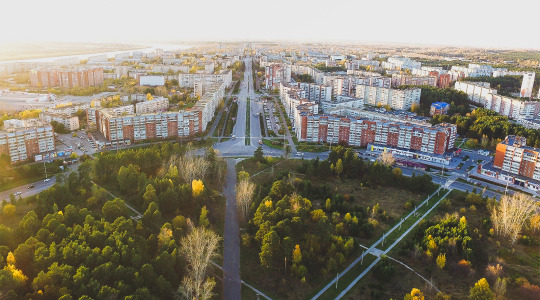
Seversk today: a bird’s-eye view of the city
Seversk is located in the geographical center of Russia, in Western Siberia, on the right Bank of the Tom river, a couple of dozen kilometers from the regional center — the large ancient Siberian city of Tomsk. This is away from the usual tourist routes, a provincial city on the plain, where of the natural attractions in the surrounding area, first of all comes to mind only the world’s largest swamp, it is difficult to compete with tourist centers in Moscow or St. Petersburg, the historical pearls of the “Golden ring” of Russia or the famous Baikal. But relatively close to us are the wonderful Altai mountains and Tomsk itself is known for its ancient wooden merchant buildings. For those interested in the history of Russia and the USSR, especially some dark pages of the past, we have something to see ;)
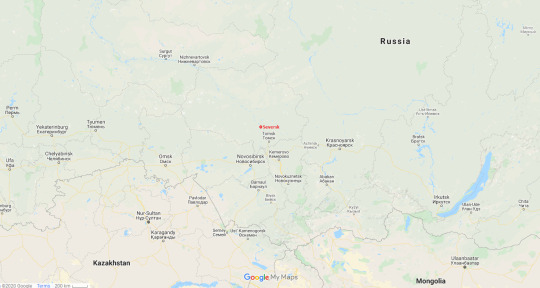
google maps, Seversk in red
A closed city is not just a name. It is really surrounded by a solid protective strip around the perimeter. The city is surrounded by a perimeter fence with 5 rows of barbed wire. This is not a saying, there are really 5 of them. For the unprepared, it looks creepy, for the residents of Seversk — a common thing. All roads to and from the city pass through special checkpoints (abbreviated as KPP).
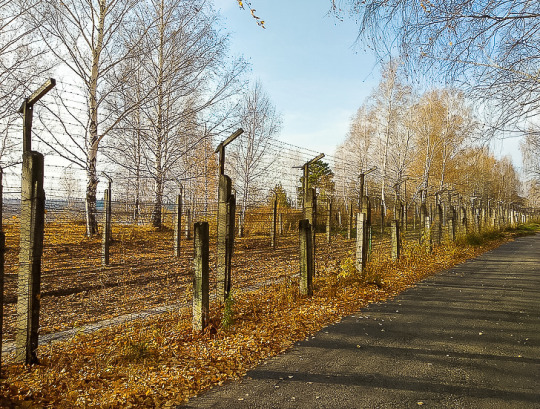
a wall of barbed wire on the border of the city
In this regard, the main document of the northerner is not the passport of the Russian Federation. The pass is our everything! You can only enter the city through a checkpoint with a special pass. “Without a piece of paper, you are a bug” (a Soviet folk saying) in our case works 100 %. If you forgot or (Oh my God!) lost your pass — you just can’t get into the city. What to do? Call relatives in the city and sit at the checkpoint, waiting for them to bring a pass. For such at the checkpoint there is a special bench, and people almost always sit on it. The city is located on the river, which means that a trip to the beach in the summer-also through the checkpoint. And that’s when the pass is easy to lose. And it can also be pulled out by thieves along with the wallet. Or you can leave it in another bag. In General, when you use a pass every day, it becomes commonplace.
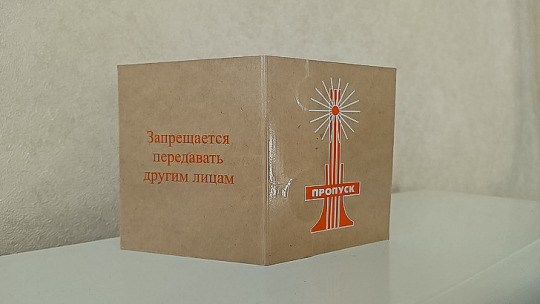
special pass to a closed city, the inscription on the left — “ it is forbidden to transfer to other persons”
Every time you drive into the city, you show your pass, open the trunk and all the doors in the car. Armed military personnel are searching you, your document, and your car. Strangers are often shocked by this situation, but we are used to it, there are almost no people who are dissatisfied with the city’s regime among my friends, this is additional security in the city.

Stella at the entrance to the city
Stella at the entrance to the city, it is she who is depicted on the cover of the pass to the city. Stella is decorated with the image of the “peaceful atom” — a new concept of the city.
Seversk was founded in 1933 as an independent locality. It was then that the barracks were rebuilt and a youth labor commune was created (a normal phenomenon in the spirit of post-revolutionary Russia) with the proletarian name “Chekist”. In Russian, a Chekist is an employee of the “Cheka”(R.E.C.) or the all-Russian Emergency Commission by analogy with the current Russian name of an organization with similar functions — the FSB (Federal Security Service), probably known to you, dear reader, the Soviet secret service KGB (state Security Committee), or for example, a similar organization is the USSS. Maybe these linguistic explanations explained something to some of the readers :)
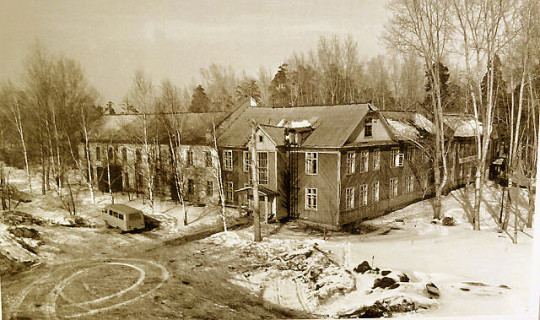

old photos of the area “security officer”. To the right, next to the new high — rise building, the oldest building in the district-a wooden hardware store-was preserved for a very long time, almost until the two thousandth years. I remember it well, a ramshackle old building with creaking floors and peeling green paint on the wood. Now in its place is a modern shopping center
Under the commune, there was a labor camp for” re-education by labor “ of idlers, parasites and other members of society who were not conscious, according to the authorities.
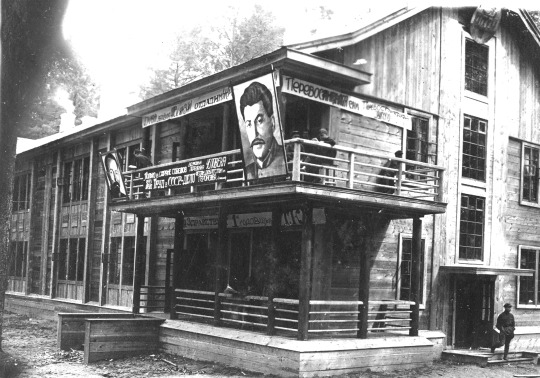
old photo of the labor colony building
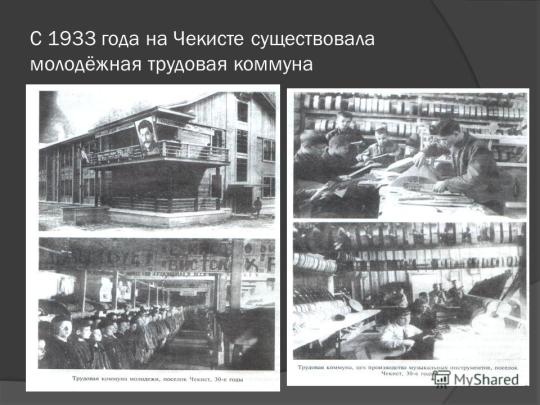
old photo — labor colony in the commune of “Chekist”
The commune gave its name to the village in which lived the first builders of the city. After this name passed to the area of the city located here today. Now this neighborhood is the South-Eastern border of the city. There is a stadium “Trud” and a sports school, a children’s health camp, the main medical center of the city and a dacha village that runs up to the mouth of the Kirghizka river.
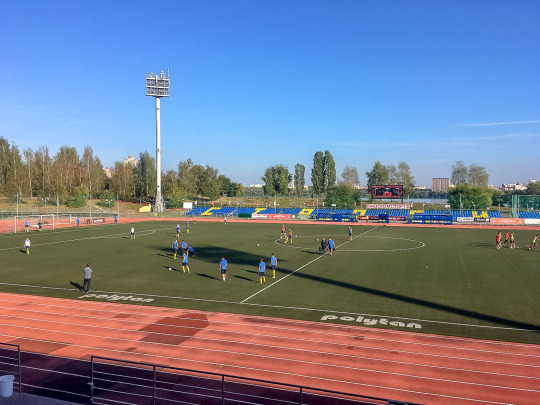
Seversk today: stadium “Trud” (translation - Work)
By the way, in the mouth of the Kirghizka river, which is considered the territory of Seversk, there was a monastery in about 1650, which can be considered the oldest building in the city. Alas, it lasted less than a century — as follows from the Chronicles, the monastery was destroyed and washed away by a flood in 1730. But I do not plan to go so far into history, otherwise I will have to mention the sites of primitive people and numerous finds in them found on the banks of the Tom river.
We will go back to Soviet times. In General, there were several villages on the site of Seversk. Some were transformed and became the outskirts of the city, some concrete jungles of the city just swallowed up, such as the village of Beloborodovo. It was located in the area of the current “new city” (relatively new multi-storey areas) and was formerly the outskirts of Seversk. I remember, as a child, we often rode bicycles with neighboring boys in Beloborodovo, drinking water from the pump — a stupid excuse to just roll somewhere :) The village, as such, finally disappeared in 1980.

Seversk today: Pobeda street is the widest street in the city, located in the new part of Seversk. 40 years ago there was a village Beloborodovo
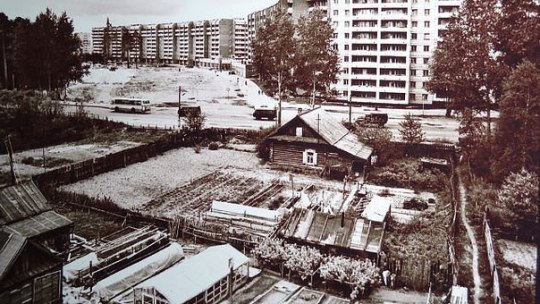
Old photo, high-rise buildings of the new district absorb the old wooden houses of the village of Beloborodovo
And for example the village Iglakovo exists to this day, only transformed it in a holiday cottage complex. Now this is the western border of the residential part of the city, then the industrial zone begins.
The future Seversk began to turn into a city in 1949, shortly after the end of the terrible and bloody Second World war. Then the Council of Ministers of the USSR decided to build a plant for the production of enriched uranium and plutonium near Tomsk. The new industrial complex was originally called the “Zauralskaya office of Glavpromstroy” or Combine №816.
However, during my youth, the labor of prisoners was not used for a long time. But the construction of the young city actively involved the internal troops of the USSR — the so-called construction troops. Units of the army without high military qualifications, in which young people, soldiers of military age, mastered the peaceful construction profession. I think, during my childhood, this was the largest army category, something like reserve troops in case of an enemy attack. These soldiers-young people who served for two years after reaching the age of 18, had to learn the basics of military discipline and the basics of popular construction professions after school and College, being both a reserve of combat army units and a “free” labor force of the Soviet state. This is a tricky Soviet system, which had both negative and positive aspects… Of course, the internal troops were not the most prestigious category. All those who dreamed of military service, wanted to get into any other army. It was still completely incomprehensible and uninteresting to us boys from the eighties. For that it was interesting to get to the construction site and try to exchange for example for fried sunflower seeds or just beg for a shiny soldier’s button with a star or even better, a cockade. The king of wishes, I remember, was a soldier’s belt with a huge badge :)
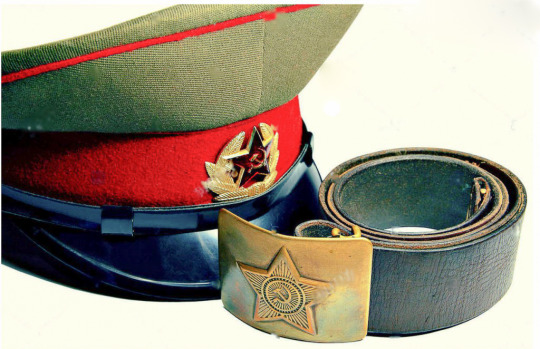
a military cap with a cockade and a belt with a shiny shirt — the dream of boys in the USSR :)
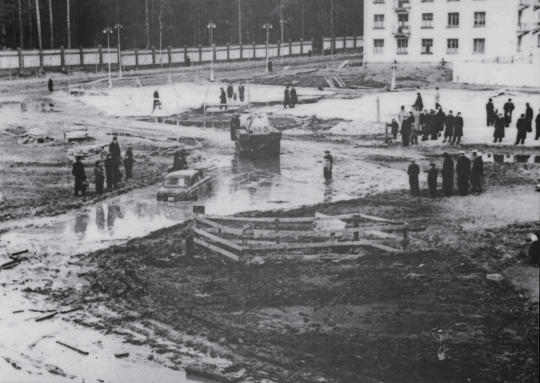
An old photo of construction of Seversk. A truck tries to pull out a car stuck in a large puddle
The original code name of the “Сity-Mailbox number 5”, because the construction of the city-forming plant was named: mailbox #5, in this regard, the city was colloquially called “the Fifth Postal” or simply “Postal”. Seversk is still often called “Postal” by locals for old times ‘ sake, most of them don’t even know where it came from.

“Postal”… The famous computer trash-FPS of the same name is just a funny coincidence ;)
In 1954, the closed settlement was given the name Seversk, but later documents began to refer to it as Tomsk-7 for reasons of secrecy. That’s the name on my official birth certificate. This is my homeland. A beautiful and cozy young city, whose residents bravely forged the atomic shield of the Motherland with their own hands for several years. (irony with a huge amount of truth) The world’s second industrial nuclear power plant (NPP-1, also known as Sibirskaya) with a capacity of 100 megawatts was built in Seversk in 1958.
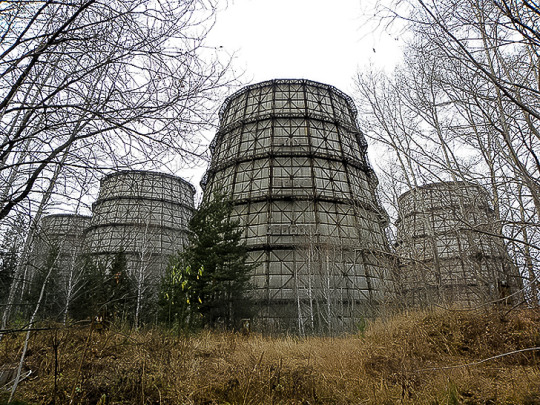
a cooling tower from Seversk nuclear power plant
The symbol of any nuclear power plant is a cooling tower. They cool the treated water that is fed from the reactor, then this water is discharged into the river.
The city’s secrecy status was lifted in 1989. At the same time, the city returned its name — Seversk. During the time of Gorbachev and Perestroika, secret production was reduced due to the disarmament program and ceased to be secret. Production was curtailed, and enterprises were repurposed for the production of peaceful products. The last reactor was shut down and mothballed in 2008. The production base and scientific potential of the former “military” industry is now engaged in peaceful research, primarily in the disposal of nuclear waste.
The city is still closed, although all the secrecy has long been removed. Every year, the regional administration discusses the issue of opening the city and removing the checkpoint, but so far everything is still the same. Residents see development prospects in the event of opening the city, but are aware of the possible loss of the current advantages of increased security, space and cleanliness of the city. There is no consensus among the people. This is how we live now. Yes, I forgot to mention that the city’s population is currently just over 100,000 people. In the neighboring regional center — Tomsk, which is 15 minutes away by car just over 600,000 residents. Seversk is considered the largest closed city in Russia. The city is cozy, clean, and self-sufficient. We live and work in the same way as residents of any other cities. All the infrastructure is there.
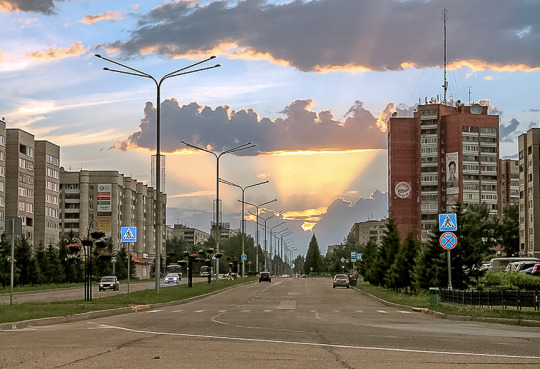
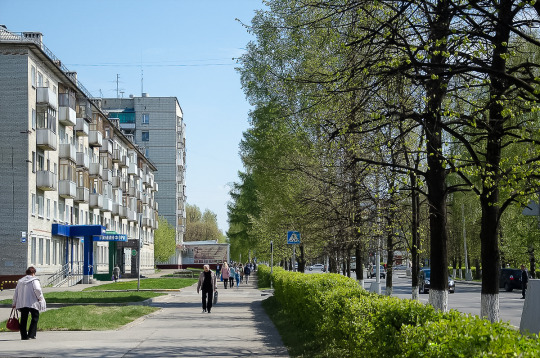
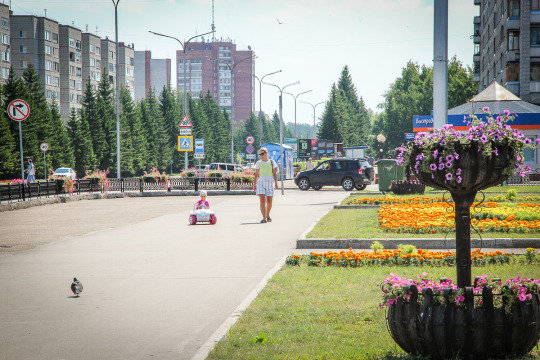
Seversk today: city streets
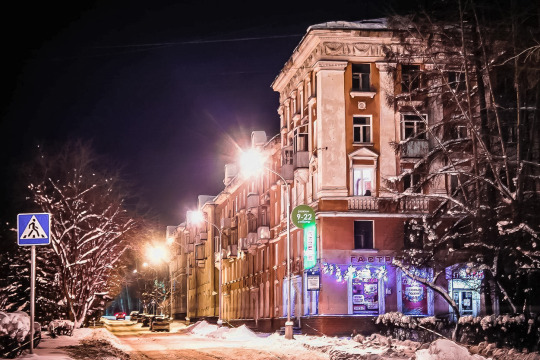

Seversk today: the old part of the city, winter
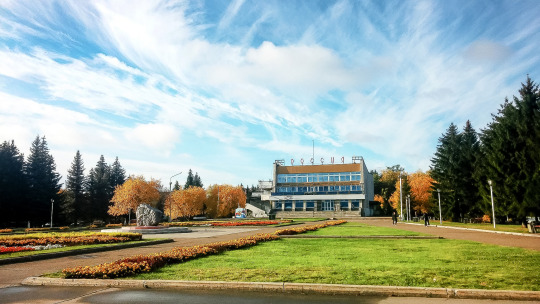
Seversk today: cinema “Russia”. In Soviet times, the city had three cinemas, but now with the development of television and the Internet, the interest of viewers has somewhat decreased.

Seversk today: The city is home to the largest monument to Vladimir Lenin in Siberia. It is installed on the square in front of the administration building
Perhaps it is worth noting that the people of Russia in general are calm about some historical buildings and monuments. There is no such thing that with the new trends of time something began to have a negative assessment in society and there was a need to immediately erase reminders of this from the face of the city. Even streets, as you may have noticed, are rarely renamed, although the Communist ideology has long ceased to be relevant. Well, is “Lenin” worth it and worth it to yourself, does it interfere? This is primarily a historical monument from the period of the city’s formation, we rather rethink and treat such monuments as architectural historical buildings. No, in the nineties, we also had a wave of reformers who wanted to demolish everything old for some reason, but thank God common sense still prevailed and now such objects can be safely recorded in the sights of our city, giving it its own identity.
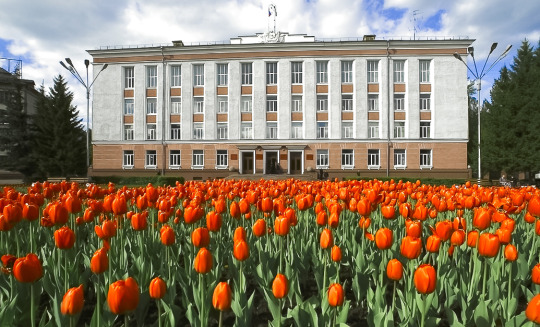
Seversk today: the building of the city administration
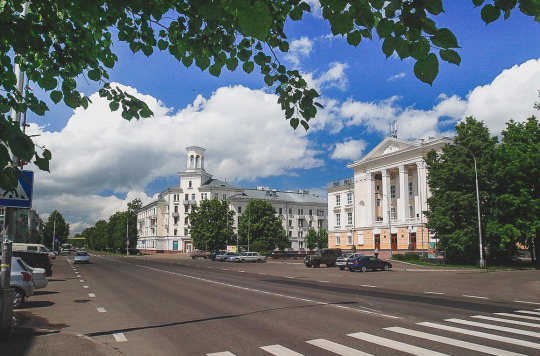
Seversk today: Nikolai Ostrovsky theater in the old part of the city
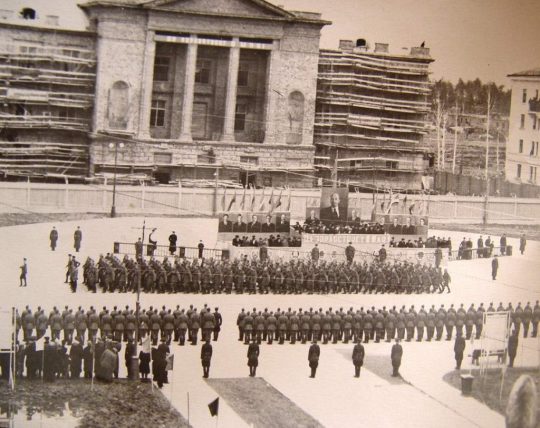

old photos: on the Left, the construction of this theater, 1958, the parade on the square of the same name. On the right is a theater in the late sixties

Seversk today: authentic old streets, classic “Stalinist” buildings

Seversk today: as the antipode of the previous photo, high-rise buildings in the newest district of the city, near the river Bank. By the way this place used to be a cargo dock
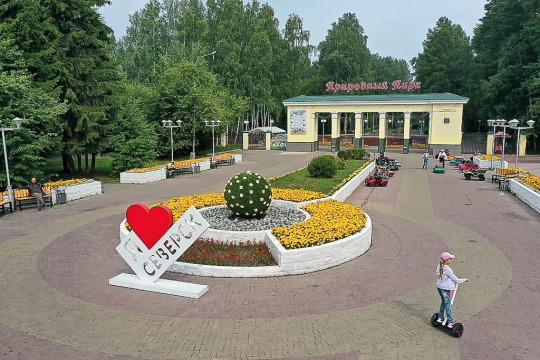
Seversk today: entrance to the nature Park in the city center

Seversk today: Museum, music school, “Khrushchevskaya” building in the center of the city… and on the horizon pipes of frozen regime nuclear facilities
Since childhood, we have understood what city we live in and what can happen at any moment. This was recalled by the inscriptions on the houses “Shelter-5 m”. They were in any part of the city, installed in the basements of apartment buildings.
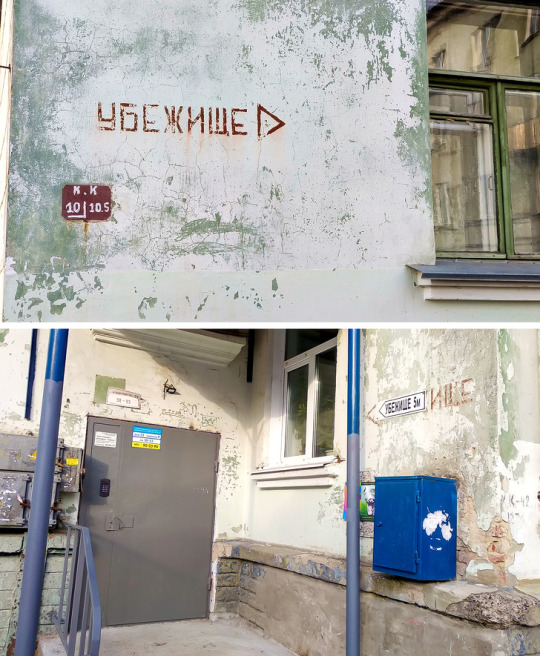
inscriptions on houses “Shelter-5 m”.
Such small concrete towers are found all over the city: on playgrounds, on city alleys, near the roadway. This is the ventilation system of urban shelters. When you stand next to one of these, you realize that under your feet is a network of underground corridors.
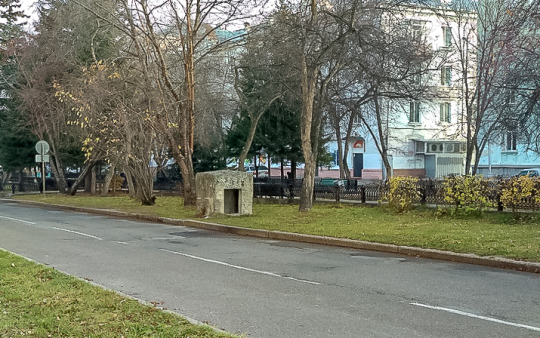
concrete ventilation towers in the city
In the lower grades of the school, training activities were also conducted on the organized issue of protective respirators and gas masks and rapid movement to the nearest shelter. Passed standards for the time of putting on a gas mask. I also remember how we were shown special posters and educational films. I can still see the “atomic shadows” from those posters. Imagine a person standing and casting a shadow on a wall. At the moment of radiation, a person evaporates, but his shadow remains. This is called the “atomic shadow”. That is, the person is no longer there, but his shadow is there.
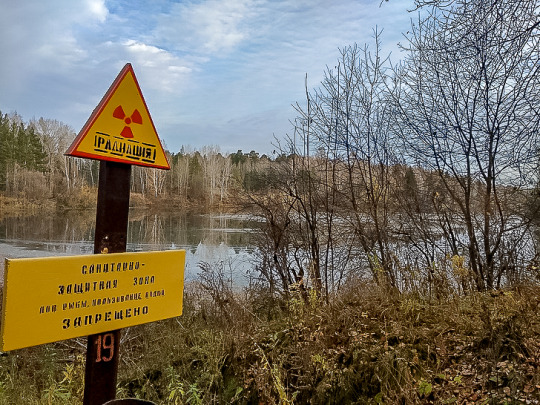
sign “radiation” on the Bank of a small river near the city
This sign stands on the Bank of a small river, which is popularly called the Daisy. By analogy with the sign of radiation. It was from here that water was taken to cool the nuclear reactor, which produced fuel for the nuclear power plant. The water was also returned there… In the river, fish are caught, unnaturally enlarged in size, which clearly should not be eaten.

a berry “Irga”
All residents had the idea of fix-products that remove radiation from the body. For example, everyone had honeysuckle and Irga berries growing in their gardens. Everyone ate these berries in buckets. Although outside the city, many do not even know that there is such a berry — Irga.
In addition to the time, date, and temperature, the main city clock also shows the radiation level. I’m sure most of the city’s residents have no idea what level is considered normal. But in fact, the norm is 15–20 microrentgen/hour. By the way, in some Russian cities the radiation level is much higher than in our country. But if you take a walk with a dosimeter in some places around the industrial zone, you can find bad places…
Here it is worth Recalling again the excellent TV series “Chernobyl”. No, it is not perfect, it is too” Western “ conveys the communication of people — in the USSR, people did not talk like this and did not behave like this, it has a lot of “cranberries”. This term is used by the Russian audience to describe the demonstration of unreliable Western cliches and images about Russia or the USSR in the cinema. But in terms of scenery and atmosphere, the film is certainly impressive. Personally, I liked it.
All closed cities are very similar-the architecture, the location of the streets. Especially the old part of the city, which was built during the Soviet era. That is why I watch the TV series “Chernobyl” with different eyes. I watch Chernobyl, but I see Seversk.
Of particular interest is the fact that an outstanding scientist Valery Legasov once lived and worked in Seversk. Yes, the same Legasov, the main character of the series “Chernobyl”.

On the nuclear topic, I would also recommend to you, my dear reader, the Russian film “Aurora”. A very emotionally moving film with a brilliant atmosphere. If you find somewhere this movie with a translation into your native language, I highly recommend watching it!
And why did I remember movies with atomic catastrophes after a note about city clocks? Of course, because this crown is close to the residents of Seversk. In 1993, an accident occurred at the Siberian chemical combine. The explosion resulted in the release of radioactive substances into the atmosphere, and 1946 people were exposed to radiation. Index on the international scale of nuclear events INES-4.
I remember the atmosphere of suppressed fear in the city during this event, even though I was still a young boy who only had girls on his mind. And I remember how three months later, at the end of August this year, a group of schoolchildren went for a walk “around the objects”. Well, such a self-entertainment event on school holidays, a twenty-kilometer hike along the “wild” route around the regime objects. Walk, hot summer, the birds are singing. Boys flirt with girls — in General, the usual walk of youth. We have already gone quite far, almost half of the route. The path makes a sharp turn and behind the dense foliage of acacia, a group of youngsters in open summer clothes suddenly face to face with a group of adults in white protective suits, fully closed “spacesuits”, with dosimeters similar to mine detectors, which these “cosmonauts” were leading in a line along the road and roadside. We stood up, our mouths open and our eyes wide. “Spacesuits” , too, I think were taken aback, perhaps they wanted to tell us something, but because of the glass they did not hear anything. Perhaps the senior one waved his hand at us intensely, saying get out of here immediately. They ran as fast as they could. Such a funny childhood memory.
In the end, I would be happy if some of my readers, inspired by this article, wanted to visit my native Seversk for tourist purposes. Moreover, despite the status of a closed city, the administration of the Siberian Chemical plant regularly conducts excursions to the territory as part of organized tourist groups. You only need to have a group or the help of a local travel Agency in the organization. And of course extra time, the documents of all willing participants are carefully checked by the FSB :)
However, it seems to me that with the latest photos and information, I drove away any desire to come to us :) And now you see Seversk as something like this:
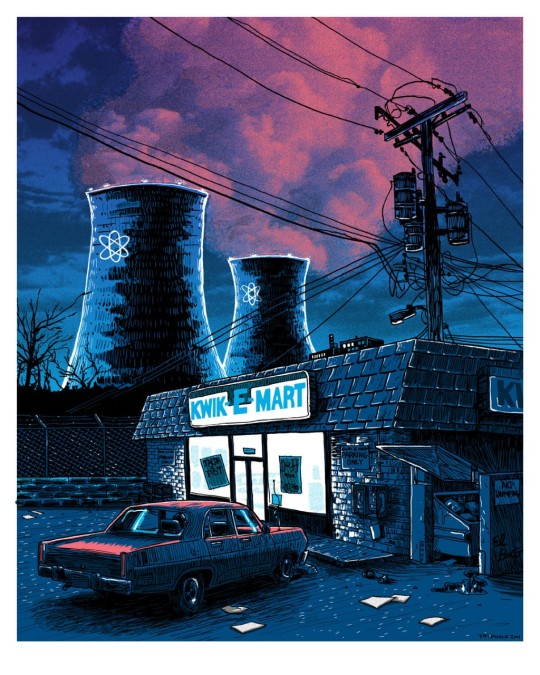
Seversk is not really like that!
Please remember it better this way: This is a full-length statue of a Mother and child near a children’s clinic in the city center. the monument is very old, I remember it from my childhood and I always liked it very much.
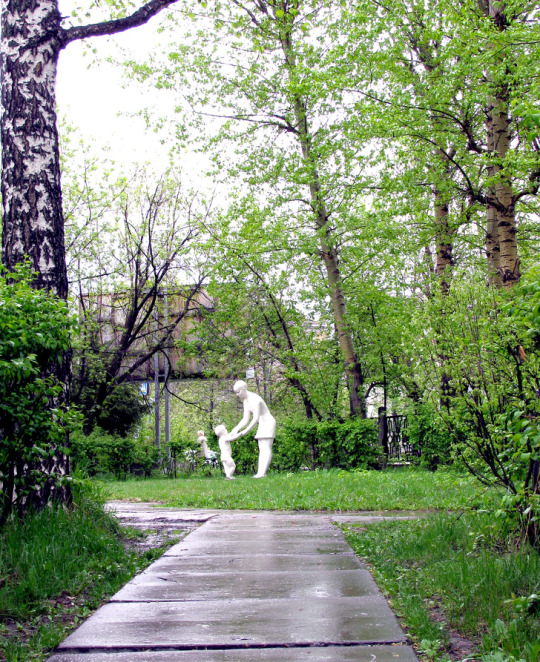
statue of a Mother and child near a children’s clinic
3 notes
·
View notes